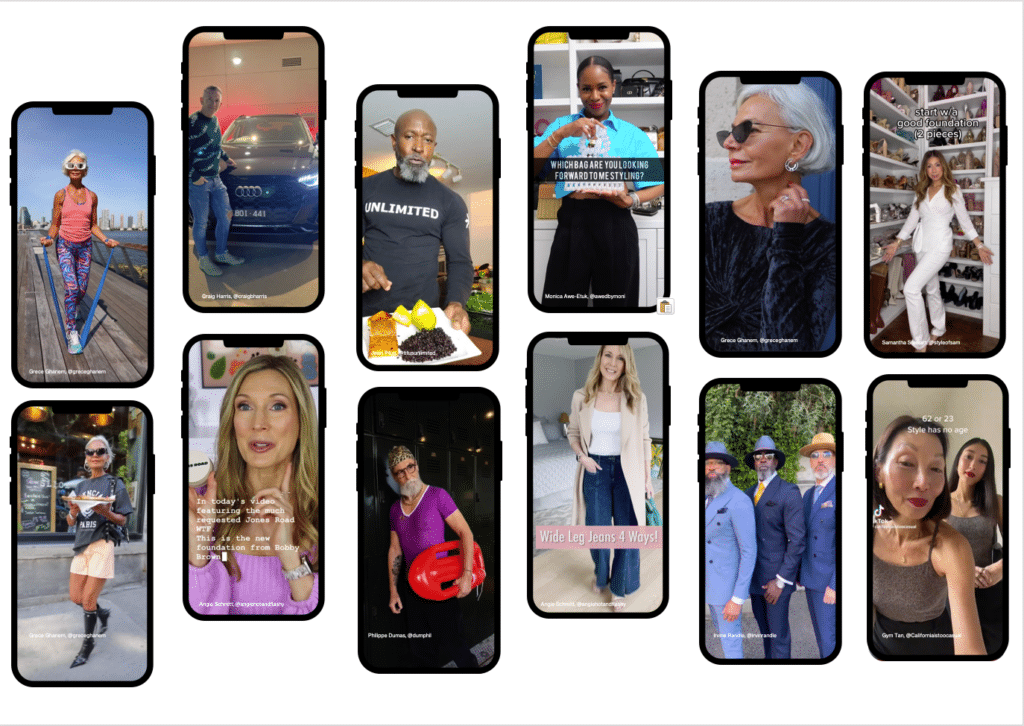
Less traffic, less control, more shopping, more opinions. Google’s Gen AI Search means big changes for your brand – here’s how to get ready
Google has just gone global with testing of its new AI-powered search, yesterday opening it up to users in 120 more markets, in four more languages. Since testing began in the US in May, at Wavemaker we’ve been busy figuring out what it means for our clients. The answer right now is less traffic, less control, more shopping and more opinions. How to get ready for these changes is a more complex question, but here’s what we’ve seen so far, and how to get started.
SGE makes Search look and feel very different to what we’re used to. Within the Google Labs SGE test environment, Google Search results are filled with rich AI-generated informational text, with trusted retailers and publishers getting much more visibility, while search results for brands featured brand websites less and reviews and opinions more than we’ve seen before.
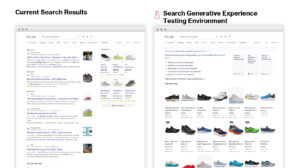
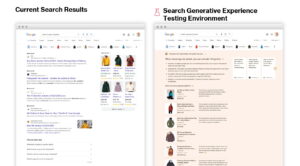
Above: SGE results with new text formats and more retailer visibility
CMOs’ reaction
Over the past six months we’ve spoken to our biggest clients about the upcoming changes – and we’ve never seen CMOs so engaged with Search. If the SGE results go live in the current format, this will be the biggest change in Search in 15 years.
There are four questions that all CMOs are asking about this new Search era:
‘How do I control the generated AI results?’
‘What kind of content do we need to rank?’
‘What impact will this have on traffic to our website?’
And the big one: ‘How do we respond to this new Search experience?’
Less control, less traffic, more shopping, more opinions
The bottom line is that brands won’t be able to directly control the Gen AI responses provided within Search – and nor will agencies – but that it will be possible to influence these. Clients are understandably concerned that if consumers get more answers within Search results there will be a corresponding reduction in site traffic. Predictions within the industry vary hugely as to how big this reduction will be, some suggesting minimal impact, others an 80% reduction; at Wavemaker we sit somewhere in the middle.
Searches for brand terms (like the example for Nike Pegasus shoes, below) are a particular concern, with review content being pulled from multiple sources and giving pros and cons above product listings. It’s a first for Google to show positive and negative opinions of a product or brand, especially above paid ads and shopping results.
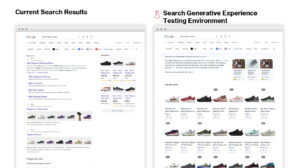
Above: Search results for Nike Pegasus Shoes
Early trends and advice
Our search specialists have had access to the SGE results in Google Labs since the first week of launch and have been carefully monitoring the changes in results since then. That means we’ve been able to help clients understand what the impact will be through a programme of AI Readiness in Search.
We began with an analysis of all the new content formats appearing in SGE, looked at which websites were getting cited, how this varied across different search intents (brand, information, commercial) and the impact on Paid Search. This work has revealed three early trends:
01. Throttling automatically generated SGE results
Since Google started experimenting with SGE, over time we’ve seen the platform deliberately limiting the number of search results that automatically generate AI content – we call this ‘throttling’. In May, Google automatically generated AI results for brand terms like Nike, but in November it’s not automatically generating AI content and instead requires users to click on a ‘Generate’ button.
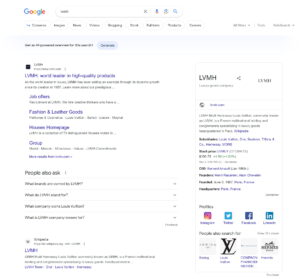
Above: ‘throttled’ results for brand searches
This is mostly happening in searches for brands and lead category terms. We think the idea behind throttling in these cases is that users want to navigate through the results quickly, so reading extra generated content is an unnecessary step which would lead to lower engagement with Gen AI results.
It may or may not be a coincidence that it was the Search results on these core brand terms which provoked the strongest negative reaction from CMOs. It’s pretty brutal for a marketer to have their carefully orchestrated brand image reduced to a one-line description and five pros and cons in bullet points! Marketers are still yearning for Google to provide brands with a Baidu (China’s leading search engine) -inspired ‘brand zone’, where they can provide rich brand imagery in response to search for core brand terms. We believe SGE increases the argument for this and it’s at the top of our Christmas list from Google!
02. Citations won’t make up for a site traffic drop of 20%
Since May, we’ve also seen Google experiment with how it shows the source of Gen AI results. Nested citations, triggered by the user clicking for more info, are making it easy for users to see the source, get further context and trust the content. For websites included as a citation, this is a high-value impression – though it will result in less clicks than featuring in a top position in traditional search. Overall, we anticipate that on average brands could see a 20% reduction in traffic from Search when SGE goes live.

Above: Drop-down citations reveal source content
03. More connected ecosystems, Social
In the long term there will be more opportunities for brands to create better-connected ecosystems. SGE will undoubtedly give retailer information more prominence in Search, but we’re starting to see how Social can also drive Search. In SGE, we’ve spotted the inclusion of spoken word from video alongside extracted text information, for example spoken comments from TikTok videos are being inserted as text in results.
Search for ‘How do I know my L’Oréal foundation shade?’
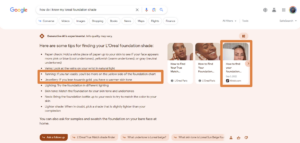
Above: TikTok spoken word appearing as text in SGE results
This means influencer content is likely to become a key influence in SGE results. Brands need to understand how their messages are being conveyed in influencer videos and track how their social content is impacting Search.
How CMOs can future-proof Search strategy in 2024?
Google moves cautiously, and it hasn’t publicly launched Gen AI in search results yet, but we expect it to in 2024. This is how you can ensure you’re prepared:
- Set expectations within your business that the Search landscape is set to change significantly in 2024 and there is a risk of reduction in site traffic.
- Follow current SEO best practice to optimise your brand assets with a focus on the quality of content, authorship and credibility.
- Ensure your Paid Search approach leverages the latest formats and innovations that Google is making available. Although Google is largely keeping paid ads separate from SGE, when Gen AI formats are fully trusted we expect to see paid ads integrated and opportunities for inclusion will be offered to the brands that experiment first.
What’s next?
There’s a pressing need for agencies and clients to work closely together and build a deeper understanding about SGE. At Wavemaker, our SGE Readiness Audits are helping our clients get a clearer direction about the future of Search in their sectors. Please get in touch if you’d like to find out more.







